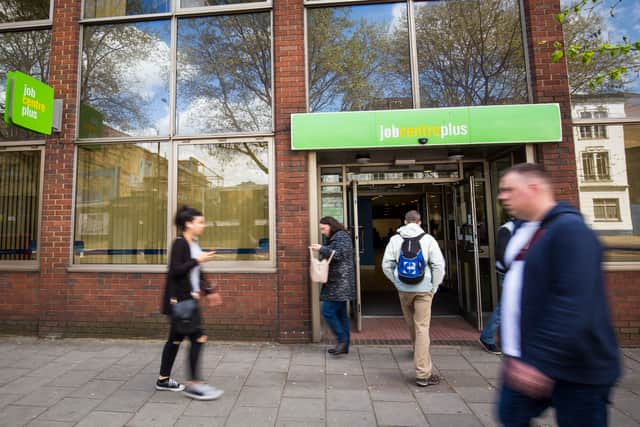Universal Credit: DWP issues warning over changes to benefit affecting thousands of claimants in October
and live on Freeview channel 276
Universal Credit claimants will already be aware about upcoming changes to the benefit that have been in the works for years. But thousands may not know that the shake-up is set to affect them over the coming weeks.
The Department for Work and Pensions (DWP) is in the process of getting rid of six types of benefits and moving people onto Universal Credit instead. The scheme is called “managed migration” and is currently being rolled out regionally across the UK over time.
Advertisement
Hide AdAdvertisement
Hide AdThe targeted regions in September 2023 are Lincolnshire, Nottinghamshire, Rutland, Cumbria, Lancashire, Essex, Dorset, Wiltshire and Hampshire along with the Isle of Wight, south west Wales and east Scotland. And now the DWP has now announced the scheme will extend to south east Wales and central Scotland in October.
Letters are currently being sent to households in these areas, telling them they have three months to put in a claim for Universal Credit. Claimants will need to visit their local Jobcentre to verify their identity and accept new commitments to ensure they are still eligible and will be paid.
The move may have an impact on the amount of money those currently on legacy benefits receive, with some finding themselves better off and some finding themselves worse off. However, top up payments will be available for eligible claimants whose payments are reduced as a result of the change, the DWP has said.
The DWP guidance states: “On Universal Credit, most people will be entitled to the same amount they received from their previous benefits or more. If the amount you are entitled to on your existing benefits is more than you will get on Universal Credit, a top-up is available. This is called transitional protection.
Advertisement
Hide AdAdvertisement
Hide Ad“You can only get this top-up if you have received a Migration Notice letter from DWP and claim by the deadline date on your letter. If your circumstances change before you make your claim, this may affect the amount you get.
“You should claim as soon as possible to make sure the amount you are currently entitled to can be protected. Any transitional protection you receive as part of your Universal Credit claim may stop if you have a change in circumstances once you’ve made your claim.”


What benefits are being replaced by Universal Credit?
The benefits being phased out are:
- Child Tax Credit
- Housing Benefit
- Income Support
- Income-based Jobseeker’s Allowance (JSA)
- Income-related Employment and Support Allowance (ESA)
- Working Tax Credit
The current focus for the DWP is mainly claimants who are on tax credits. However, the September rollout includes a small number of other “legacy benefit combinations” as it prepares to move a wider range of claimants over the next few years.
How ‘managed migration’ to Universal Credit works
According to Government guidance, a claimant receiving one or more of the relevant legacy benefits is issued with a Migration Notice informing them that to continue receiving financial support they must claim Universal Credit by the deadline date given in the letter. This is a three month deadline from the date the letter was sent out.
Advertisement
Hide AdAdvertisement
Hide AdThe Migration Notice signposts claimants to specific pages on Gov.uk where they can find more information or claim Universal Credit, and to a dedicated helpline where they can access support to make a claim. A claimant will receive reminders during the three-month period if they have not yet claimed Universal Credit and the Migration Notice explains how to request more time if needed.
When a person makes a claim for Universal Credit before their deadline date, they are asked to verify their identity, accept their claimant commitment, and undertake any relevant ID verification. Their legacy benefit(s) are also terminated, with any run-on of old benefits paid as appropriate.
At the end of the first assessment period, eligible claimants receive transitional protection if the amount they were previously receiving on their legacy benefits was more than they will get on Universal Credit. This protection keeps their payments at the same level.
The amount and reason for the transitional protection are displayed on the claimant’s statement.
Comment Guidelines
National World encourages reader discussion on our stories. User feedback, insights and back-and-forth exchanges add a rich layer of context to reporting. Please review our Community Guidelines before commenting.
